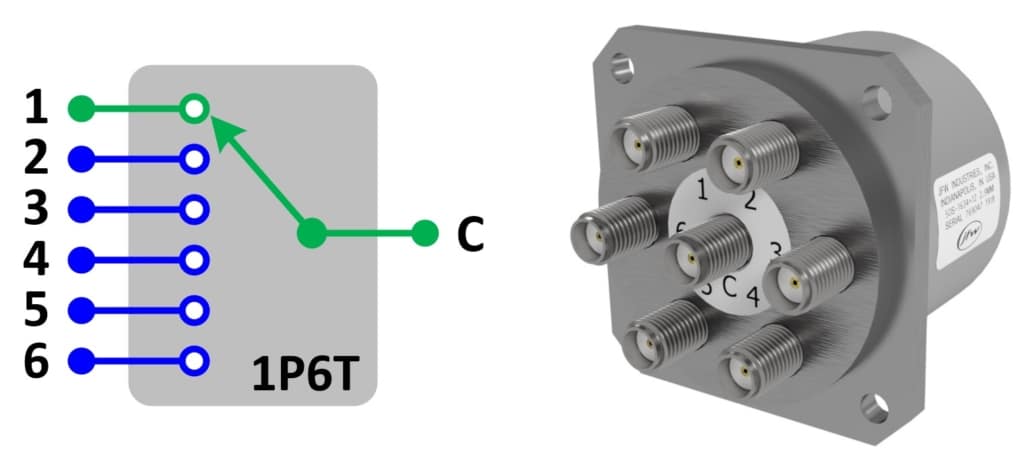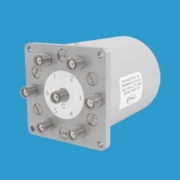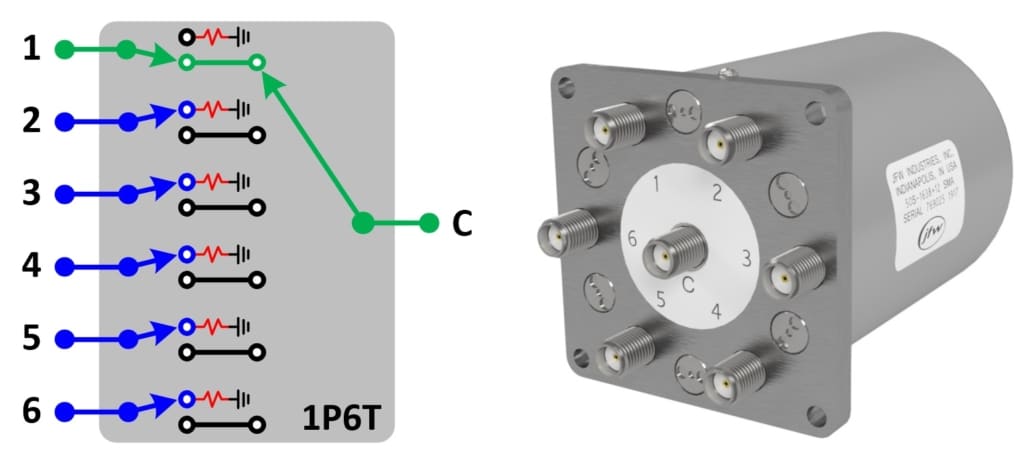What is the difference between reflective and absorptive RF switches?
When looking for a RF switch, one of the first options you have to choose from is whether the switch is reflective or absorptive (i.e. self-terminating). These terms refer to the state of the unused ports. For electro-mechanical RF switches the reflective type is much lower cost than the absorptive type.
Reflective RF Switches

Above is a diagram and image of a reflective 1P6T electro-mechanical switch with SMA female connectors. The diagram is shown with the path set from port J1 to port C (i.e. common port). Ports J2 thru J6 are unused and are reflective (i.e. open circuit). Any RF signals into ports J2 thru J6 will be reflected back to their source.
Absorptive RF Switches
Above is a diagram and image of an absorptive 1P6T electro-mechanical switch with SMA female connectors. An absorptive (i.e. self-terminating) RF switch will have internal terminations that are used to self-terminate the unused ports. The diagram is shown with the path set from port J1 to port C (i.e. common port). Ports J2 thru J6 are unused and are absorptive (i.e. self-terminating). This 1P6T switch has 50 Ohm impedance so the internal terminations are 50 Ohm terminations. Any RF signal into an unused port is absorbed by the termination.
Costs to Consider:
Besides functional differences reflective and absorptive RF switches have cost differences too. For electro-mechanical switches there is a significant cost difference (i.e. 2 times or more) between models that are reflective and those that are absorptive. The reflective models are lower cost. An absorptive electro-mechanical switch has more internal parts to add the self-terminating functionality which results in a higher cost.




